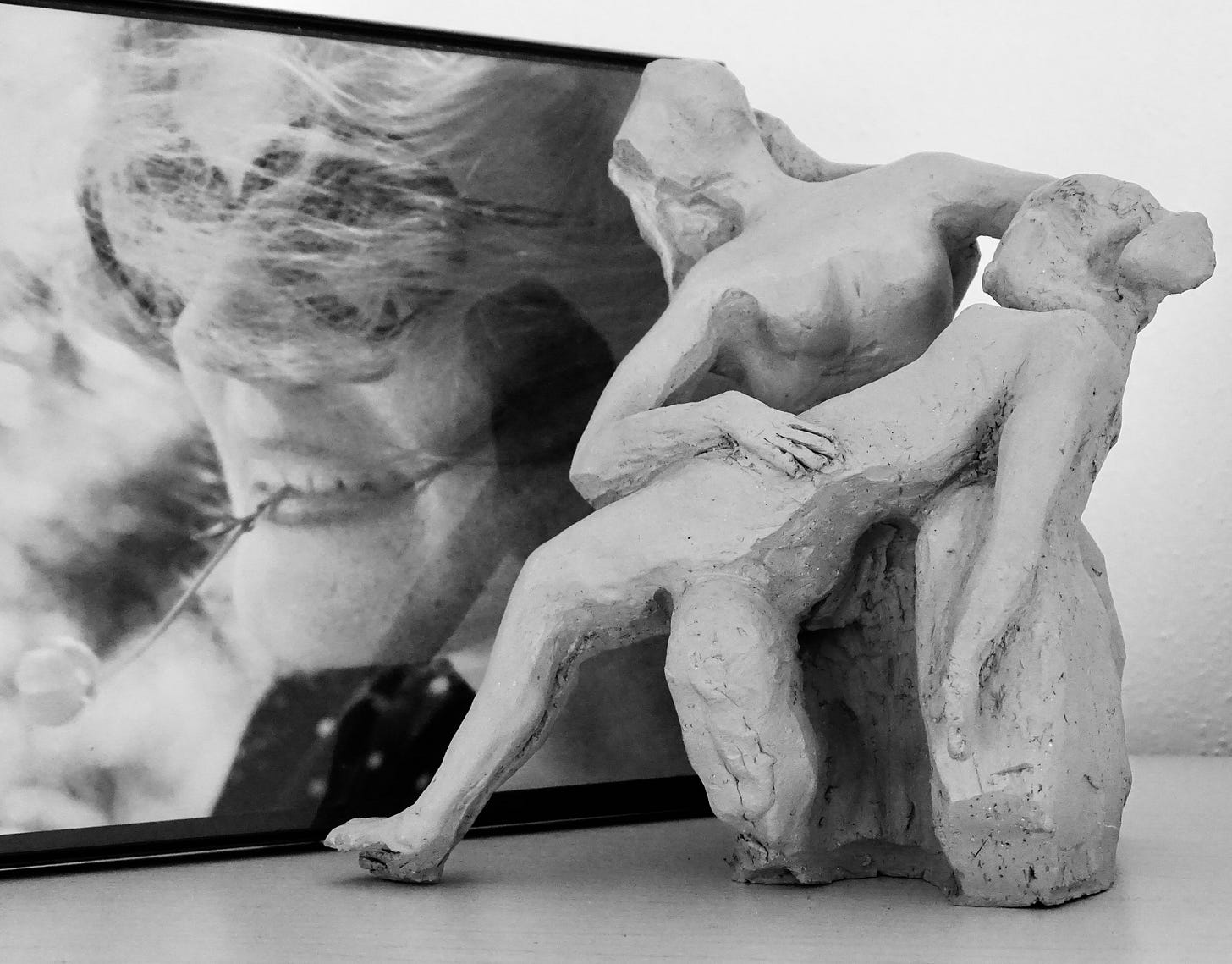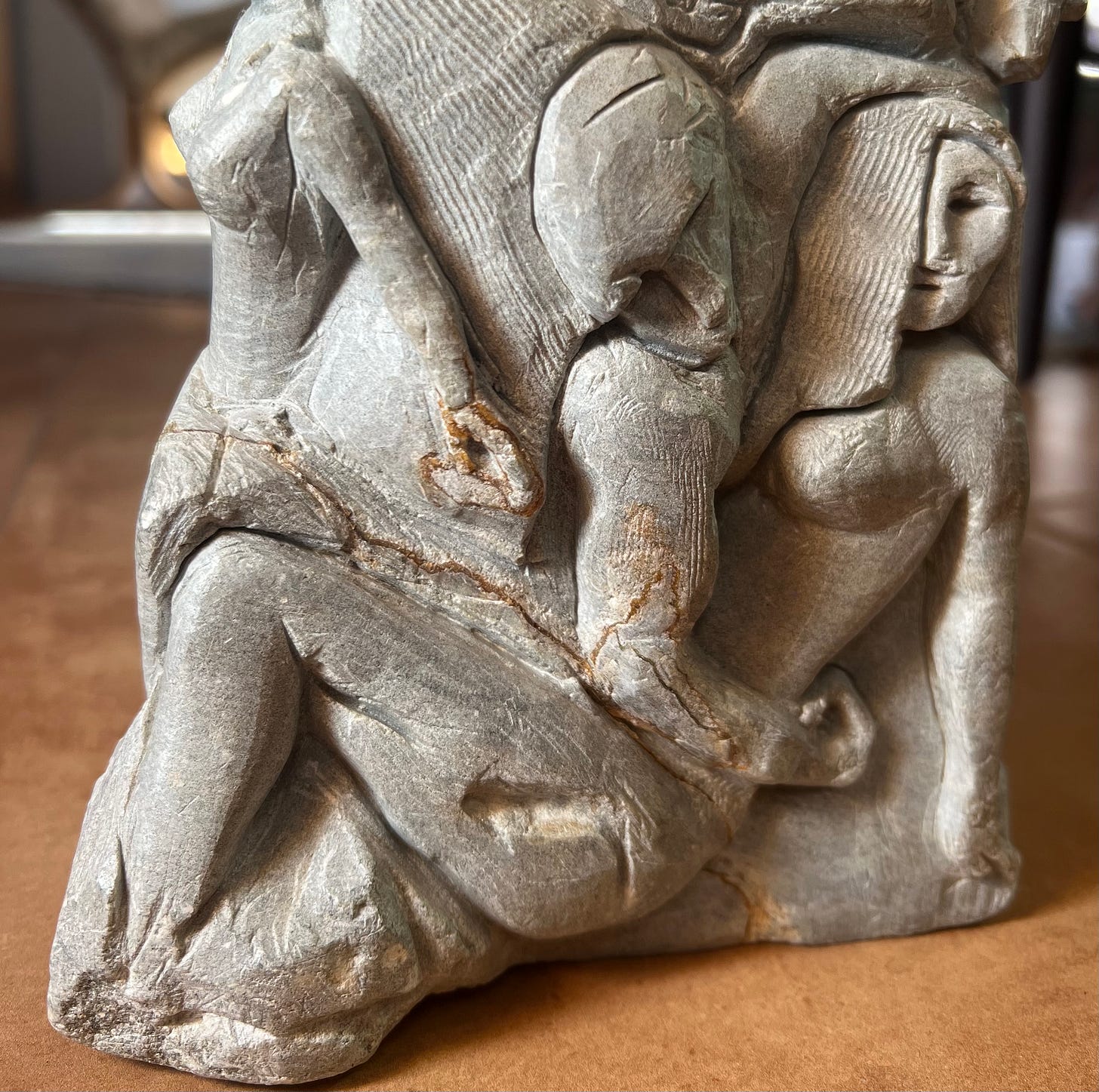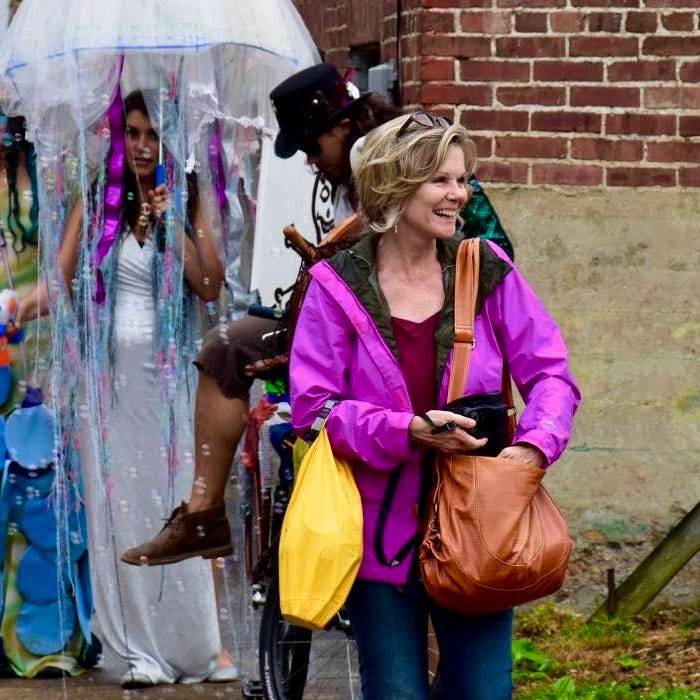During those years, whenever I was feeling especially low or depressed, I sometimes wandered through one of several former munitions buildings on the banks of the Potomac River at the edge of Old Town, Alexandria.
That’s right – I found comfort in century-old munitions buildings. Why? Because in a stroke of genius twenty years earlier, one of them – the Torpedo Factory – had been turned into a hive of art studios.
Once upon a time, the complex had 5,000 employees and was responsible for the manufacture and maintenance of Mark III torpedoes. After World War II, it was converted to the Federal Records Center and became a repository for congressional documents, German war films, Nuremberg War Crimes trial records and, weirdly, dinosaur bones.
In 1969, the City of Alexandria purchased some of the old buildings from the federal government for $1.6 million and gave them five years to empty all their ephemera, including the dinosaur bones, from the buildings.
In 1973, James Coldsmith, editor of the Alexandria Journal, suggested to Marian Van Landingham, president of the city’s Art League, that she consider the old torpedo plant for the Art League’s headquarters. Funding was approved, fire hoses were used to power-wash the building’s interior, and 40 dump trucks of the remaining debris was removed.
At the time of its opening on May 21, 1983, there were 225 artists with working studios inside the old Torpedo Factory.
Whenever I wandered through the studios, I picked up the Art League’s seasonal publication about their studio classes. Karen had left some money to the kids with the instruction it be used for education and travel. Zoë’s portion sent her to Denmark, but I used part of Leif’s portion to pay for him to attend classes there in stop motion photography, video animation, cartooning, and theater.
Just being in the atmosphere of artists, paint fumes, studios, and all that rampant creativity was like a drug; strangely therapeutic at a time when I needed it most and providing that addictive little buzz of happiness.
Throughout my entire life, I have gravitated to art and artists. Intimidated as I was by my sister’s talent and unflinching self-confidence, I had never fully yielded to this gravitational pull, choosing instead to remain shyly on the periphery – always near artists, but not really feeling one of them. Watching from the edges, a shy outsider. These feelings were the genesis for writing a book about the muse factor in the creative process.
I wasn’t sure which medium I could use to create what I wanted to make tangible from the emotions swirling within. Apart from my love of street photography, I didn’t want to paint or draw anything around me. Instead, I wanted to release much of what I had internalized over the past years of disappointments, divorce and death. Broke and brokenness. Documentary film helped, but in addition to storytelling, I also wanted something more tangible, something I’d made and could hold in my hands. And I wanted to tell my own stories.
It was while filming in Italy that I realized that I wanted to carve. And I wanted to carve marble.
So, when I noticed a class in the Art League’s fall catalogue called “Introduction to the Third Dimension,” I decided to treat myself to some art therapy and signed up for a nine-week evening art class. Taught by Mike Abrams, a graduate of the Corcoran College of Art & Design and teacher of sculptural media, it felt like a fit. Plus, I loved the name.
Pietà
A disparate group of us – male and female, of various ages and abilities – gathered on the sidewalk outside an old, converted building on a quiet side street in Old Town. There were mumbled introductions as we eyed one another, our new kindred spirits. Moments later, a tall thin man with dark eyes and dark hair, perhaps a handful of years younger than me, opened the door from inside, then beckoned us into the brightly lit, cavernous collection of large rooms. I walked in last, following the others, walking over paint splattered cement floors, staring around me at spaces open to the rafters filled with makeshift shelving and pallet racks, welding equipment, bins of stone, easels and shelves of half-finished pieces of art. It smelled of impermanence, creativity and potential. That’s a wonderful smell and I immediately felt at home.
Anxious to work in stone, I was a bit disappointed when Mike told us our first piece would be clay modeling. In retrospect, it made sense, but not to someone anxious to learn how to whale away on a block of marble to ‘release’ the stories within it.
But Mike knew what he was doing and, more importantly, what he was asking of us. I picked up a large lump of clay and brought it over to the rough wooden bench I’d chosen to work at. Once settled, I began working it like bread dough, thinking and thinking, and waiting for inspiration. With memories of my sister ever present, I wondered if I could create something that would be a tangible manifestation of how I felt about her loss.
Just as my hands and fingers were beginning to ache, it came to me. Still under the spell of what I had seen and experienced in Italy, I decided I would try to create a very raw and very rough version of Michelangelo’s Pietà. Instead of Mary, however, it would be me. And instead of Jesus, I would be supporting the lifeless body of my sister draped across my lap. I wanted to try to express my grief by not just a portrait of her, but one of me holding her, holding what remained of her physical presence.
Keenly aware I was no Michelangelo, I was free to make it my own. Instead of a head quietly bowed like Mary’s, the clay head of the figure representing me would hang back, as if wailing in inconsolable disbelief and grief at the enormity of the loss I was holding in my arms. There would be no fabric covering my head, just my hair flowing back over my shoulders. And no draped clothing, just rough, figurative representations of two female bodies.
I worked on it for the first few classes and as I pinched and shaped the orange clay, I began to feel a little lighter, a little brighter and happier. A little sculpture gradually emerged from my fingers, its message clear despite its roughness. I gazed at it in amazement, astonished I’d been able to mold a physical representation of my emotions; a little clay repository for grief – slight on talent but filled with intense emotions.
Rock Opera
For our second project, we were now permitted and encouraged to work with stone. Marble, at last!
Mike directed our attention to a crate holding scraps and rejects. I picked up a pale gray block – 8” x 6” x 4”. It had some hashes and grooves in it from where someone had started working on it. But as it had been discarded, it was free to use. Having spent what available money I had on the classes, that worked for me.
I stared at it, once again wondering what to make from it. Pondering Franco Cervietti’s words at his marble carving studio in Pietrasanta, how he carved to ‘release the story’ inside the stone, I sorted through the chisels I’d selected and spread them out on the rough wooden surface of my carving stand. Tentatively, I began to chip away, lacking any confidence in my hands.
I chiseled and shaped some of the grooves already in the stone into a partially visible man, just his muscular arm and a glimpse of his leg. As I worked, a rough but recognizable figure of a woman gradually took shape next to him, and I knew she was a younger version of me.
Over the coming weeks, what began to emerge took me by surprise. With Mike’s guidance and encouragement, it became the story of my marriage – the beginning, the end, and the middle. The good parts and the painful parts. From each side of the block, a different stage of our relationship revealed itself from the inner recesses of the stone, like acts and scenes in an opera. The long haired, young girl kneels, her clasped hands cupping her smiling face, gazing up raptly at the man’s muscular torso. The suggestion of a man. The thought or memory of a husband.
On the backside of the stone, an unclothed, somewhat older woman sits, leaning back, her knees slightly raised, her long hair flowing away from her, one arm stretched back around to another side of the block, reaching for the foot of a curled-up infant partially covered by the mother’s hair, which hangs down, covering half of her face.
Mike objected to this; he asked me to show her full face. But to me it symbolized that she was now hiding part of herself from the man who, on this side of the block, is shown in multiple postures. In one, he leans over to cradle her passionately and protectively, while another version of him raises his arm in the air as if threatening to strike her. A third man, barely visible between the other two, represents his unfulfilled potential, what might have been.
On the last side, there is a strong woman rising up from the rock beneath her feet, one arm pushing away from what is behind her, one arm raised in calm freedom, as if announcing, This is me, independent and standing strong on my own!
I called it my “Rock Opera.”
A Shattered Heart
I had entered into a new romance earlier that fall with someone I knew through my work, but it wasn’t going well and as I walked into the final class, my head was in a pretty unhappy place. Having finished the “Rock Opera,” I rummaged around in the freebies bin for another piece of stone to work with. I came across a lovely soft pink piece I thought might be perfect for what I had in mind to create that night: a hand holding a heart – my hand holding my heart, to protect it.
“You’ll have to be very careful with that, Kristin,” Mike cautioned me when he saw what I had selected. “It’s alabaster. One wrong hit and it will shatter.”
That’s appropriate, I thought. I nodded that I understood and walked over to my work bench without speaking to anyone. Normally gregarious in class, I was quiet that night. I’m sure my studio mates and even Mike could feel the dark mood I was in. I put on a pair of headphones to further distance myself from my colleagues, and any potential conversation or pleasantries. Scowling in concentration, I got down to work.
The fingers of the hand emerged fairly quickly for someone of my limited skill level, and I was pleased. Not looking for realism, I shaped them figuratively enough and after a few hours, stood back to regard my progress. Mike glanced at me periodically, noting what I was doing but keeping a safe distance. The others cheerfully went about their own projects, ignoring me, giving me the space I obviously needed.
Gradually, a small heart emerged from within the grasp of the fingers. I was astonished and delighted that I had managed to tease out a representation of my thoughts and feelings from this fragile little piece of soft pink alabaster. It was perfect, I thought, smiling for the first time that night. Just one more tap and I’ll be finished.
I positioned the detailing chisel and raised my hammer, aiming it with care before bringing it down on the metal end of the chisel.
Instantly, the alabaster shattered in my hand.
The piece I was most proud of now lay in crisp pink shards across my wooden work bench. Pulling off my headphones, I stared at it in shock.
A hush fell over the studio. Chisels and drills stopped in mid-air, collective breath was held. Everyone knew the sound of stone that was breaking when it wasn’t supposed to. I felt rather than saw everyone turn to look at me in empathetic horror, knowing what had happened, not knowing what to say, and expecting perhaps a storm of tears and frustration from me.
Instead, as I looked at the pretty pink fragments of stone, I began to laugh. How appropriate it all was, this representation of my shattered heart. I saw the irony and felt a physical release from the swirl of negative emotions I don’t think I could have gotten any other way. I looked around at everyone and smiled.
“It’s okay,” I said. “It’s all okay.”
The buzz of chattering and hammering gradually resumed as I walked over to get a brush and pan to clean up the mess I’d made.
Much as I would have loved to have had that little sculpture, the accidental shattering of it actually made more sense to me. I floated out of the studio and into the dark winter night on an unexpected high.
The “Introduction to the Third Dimension” was over, but it had worked its magic.
[Photo of Karen and my own clay Pietà]
Kristin Fellows is a published writer, world traveler, and a well-seasoned documentary film consultant. When not writing, Kristin can often be found listening to someone’s story or behind the lens of one of her cameras.
More about Kristin @ kristinfellowswriter.com







Your ability to juxtapose is absolutely divine!
Every time I read about your sister, I grieve for her--someone I never knew--and hold your loss in my heart. And I also think about the marvel of having someone so close, so beautiful, so treasured, in your life. Your writing is evocative and powerful, and the stories you capture are amazing. I can't wait to read your entire memoir!